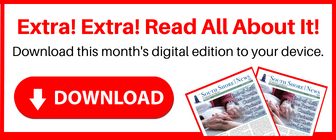By Patricia Prewitt
My Personal Rx Adviser
Many of you may have seen ads on TV for medications that include a quick audio message, accompanied by teeny tiny type on the screen advising ways to access savings programs. Included in this messaging may be the phrase “if you cannot afford your medication, company XYZ may be able to help.”
How would I find out more about these programs? If you are quick enough to write down the phone number, the easiest way for many of us would be to simply call. Usually, a real person will screen these calls. Their job is to determine if you may be eligible. Alternatively, check directly on the manufacturer’s website to find the patient assistance criteria.
What do I have to tell them on the call/application for assistance? First, they will likely confirm that you are using the medication you are calling about. If you are simply curious about the medication, but do not have a prescription, they will not be able to help.
I do take the medication, and it’s hard for me to afford it. What then? Next, they are likely to run through a series of screening questions to find out more about your type of prescription insurance, and how many people are in your household. They will also want to know what you currently pay for the medication, and if that cost is for one month or three months. Expect to be asked general questions about your current income. It’s a good idea to have this information ready before you make the phone call.
Why do they need my income information? Patient assistance programs are typically administered through the charitable arm of the company or a non-profit organization. Each company will determine its own income threshold for consideration of offering help for the expense. The income thresholds are typically much higher than those of the Extra Help program offered by Social Security.
What happens after they tell me I qualify? Be prepared to document (save copies) and be patient. Most applications are at least four pages long, and require an original prescription from your provider, as well as the provider’s original signature on at least one of the forms. Follow all instructions carefully.
What else? Even if you include everything in the submission, you may get mailed communications, or receive a phone call, asking for additional information. This can be frustrating, especially if you were careful to submit everything properly the first time.
To my knowledge, these applications are still being reviewed individually by humans, not AI. Show consideration to the people processing your application.
How long is the processing time? Generally, I advise people that it will take at least six to eight weeks for all of the validations and processing time.
What happens if I get approved? Typically, a three-month supply of the medication will be mailed to your home address free of charge. Success!
What happens if I am not approved? Take a look to determine why the criteria were not met. If circumstances change, you may want to apply again in a few months. Sometimes including a personal letter explaining additional medically related hardships and expenses can make a difference. It also may be that funding has simply run out.
Content provided is for educational purposes only, and is not intended as a substitute for advice from a qualified medical professional. The opinions expressed within are those of the author.
About the Author: Patricia Prewitt is a local Massachusetts resident who spent more than 30 years in the pharmaceutical industry. Tricia is a consumer education advocate, and loves helping people find ways to save money on their prescriptions. More information and free resources are available on her website at https://mypersonalrxadvisor.com/resources or call her at 508-507-8840. Favorite Quote: “Act as if what you do makes a difference. It does.” – William James


